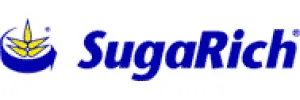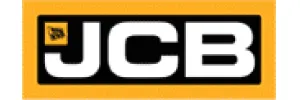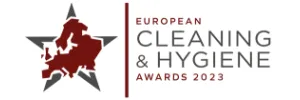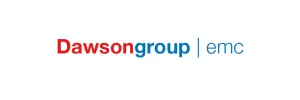News & Insights
Read the latest news from us and our clients across the globe

Posted on 16 March 2016 by adtrak.admin
EU legal clarity that food destined for animal feed is a resource, not waste, welcomed by former foodstuff processors
Paul Featherstone, Group Director of surplus food recycler, SugaRich explains how this will benefit the circular economy
 The European Commission is set on unambiguously making it clear that former foodstuffs destined to become animal feed should under no circumstances be considered as waste.
The European Commission is set on unambiguously making it clear that former foodstuffs destined to become animal feed should under no circumstances be considered as waste.
In the section about food waste within the revised circular economy communication, published in December 2015, the Commission highlighted that: “EU action is also important in areas where food waste can result from the way EU legislation is interpreted or implemented. This is the case for rules concerning food donation to food banks, and the use of safe unsold food as a resource in animal feed – the Commission will take measures in these two areas.“
The Commission proposes to exclude all feed materials, including former foodstuffs, from the scope of the Waste Framework Directive 2008/98/EC in its new legal proposal on waste. This change to the legal framework is part of Europe’s strategy to reduce waste along the entire food chain. Former foodstuffs processors convert losses from the food industry into a high-value ingredient for the feed industry, thereby keeping resources in the food chain.
Waste can result from misinterpretation of EU legislation
This clarification is an important milestone. Previously, operators have depended on national competent authorities to correctly interpret this secondary resource as a ‘by-product’ under the Waste Framework Directive. According to the legal definition agreed by the European Union, waste is “any substance or object which the holder discards or intends or is required to discard”. By-products also have a legal basis under EU law, and may variously be termed ‘production residue’, ‘co-products’ or ‘excess product’.
This left a sphere of legal uncertainty for both food manufacturers and former foodstuff processors as environmental control authorities could incorrectly interpret former foodstuff as ‘waste’ and cause unnecessary disruptions. A clear non-waste legal status for former foodstuffs is important, so that recycling is not hindered and environmental damage is lessened.
Food waste reduction targets
The revised ‘Circular Economy Package’ is designed to help European businesses and consumers use resources in a more sustainable way through greater recycling and re-use. Food waste was one of the key areas addressed, as it is an increasing concern across Europe. Actions are designed to support the 2030 Sustainable Development Goals, whereby the United Nations General Assembly adopted a target, in September 2015, of halving per capita food waste at the retail and consumer level, and reducing food losses along production and supply chains. The EU and its Member States are committed to meeting this target.
The food material hierarchy
Under the principles of the waste hierarchy – a prioritised programme that encourages the most appropriate use of resources – the greatest level of effort should be made to reduce the level of surplus food created in the first place. Prevention of food ‘waste’ at source means valuable materials are retained. When the creation of surplus food cannot be avoided, reducing waste through redistribution to people should be prioritised, for example through food banks as the next route. Following attempts to prevent and minimise the creation of food waste, efforts should then be focused on reusing and recycling surplus produce by, for example, conversion to animal feed.
Recycling may be a concept that some businesses associate more with packaging, rather than food, but methodologies exist to safely harness the value of food unsuitable for human consumption.
There is a growing acknowledgement that residual food is in fact a resource from which future value can be achieved. The former foodstuffs industry already processes 650,000 tonnes in the UK and 3.5 million tonnes across Europe. By offering food producers with a consistent and sustainable outlet for surplus food, former foodstuff processors are an exceptional example of resource efficiency in the EU circular economy.
Where such recycling is not feasible, there is the option to compost the residual food or send it for energy recovery. Composting and energy recovery receive a lot of attention in the media, however it is important to remember that, under the principles of the waste hierarchy, where possible, valuable nutrients need to be retained in the food chain.
Anaerobic digestion (AD) for example, creates methane which has the potential to be used as vehicle fuel; and/or biogas which can be burned to produce heat and electricity; digestate which can be used as a fertiliser; and water. Processes such as AD should only be considered when all earlier opportunities in the waste hierarchy, including re-use and recycling have been exhausted.
Currently there still are many food manufacturers in the EU that prefer to dispose their food by-products through bioenergy or compost, fearful that the legal responsibility of a ‘feed business operator’ could be a risk factor. The removal of any legal uncertainty around the safe use of food losses in the feed chain will remove the barriers that put a brake on the use of former foodstuffs in animal feed and help benefit the EU circular economy.
What are former foodstuffs?
Examples of former foodstuffs used in animal feed are bread, biscuits, cakes, chocolate, crisps and breakfast cereals. These starch rich foods can be recovered from food manufacturing and retail organisations, when factors such as production errors or elapsed sell-by dates prevent their sale or re-use. In addition, surpluses can result from seasonal festivities such as sports events, Easter and Christmas. Whilst these products may be considered unsuitable for human consumption, they still contain many valuable nutrients.
Compliance
Former foodstuffs must be in full compliance with EU feed safety requirements as well as the General Food Law’s demands as regards traceability to become eligible for feed use. (EC Regulation No.178/2002). The process is subject to strict legislation and quality control mechanisms.
They should not be confused with swill, food and catering waste that is not allowed to be used as animal feed. This ban, dating from 2002, aims to minimise the risk of transmission of animal diseases such as foot and mouth and swine fever.
Sustainable food chain
Using carefully developed and stringently controlled methodologies, starch-rich and oil-rich foods can be reprocessed and converted into nourishing animal feeds. Blended to suit farmers’ specific requirements, such feeds improve the quality of livestock products that people subsequently eat, hence closing the food chain loop.
Surplus food which is safe to feed to animals is definitely not waste. The nutrients stay within the human food chain, whether it’s converted to eggs or to milk, which then goes back into human food. This approach ensures valuable nutrients are retained in the food chain, helping to improve the quality of livestock and their production, and therefore what people subsequently eat.
Food is clearly under the spotlight and, consequentially, waste prevention is being progressively communicated. The drive towards a resource efficient economy means the traditional landfill route is no longer considered as the first option.
Once the EU legislation, clarifying that surplus food is not waste is transposed into country specific legislation, there will be an even greater drive to keep food out of landfill and make the most of its value.
Published in CIWM Journal – March 2016
Experts in Public Relations Services & Communications Management
Our ServicesGenuine industry specialists in cleaning and hygiene, environmental and recycling, and facilities management
Our Sectors












